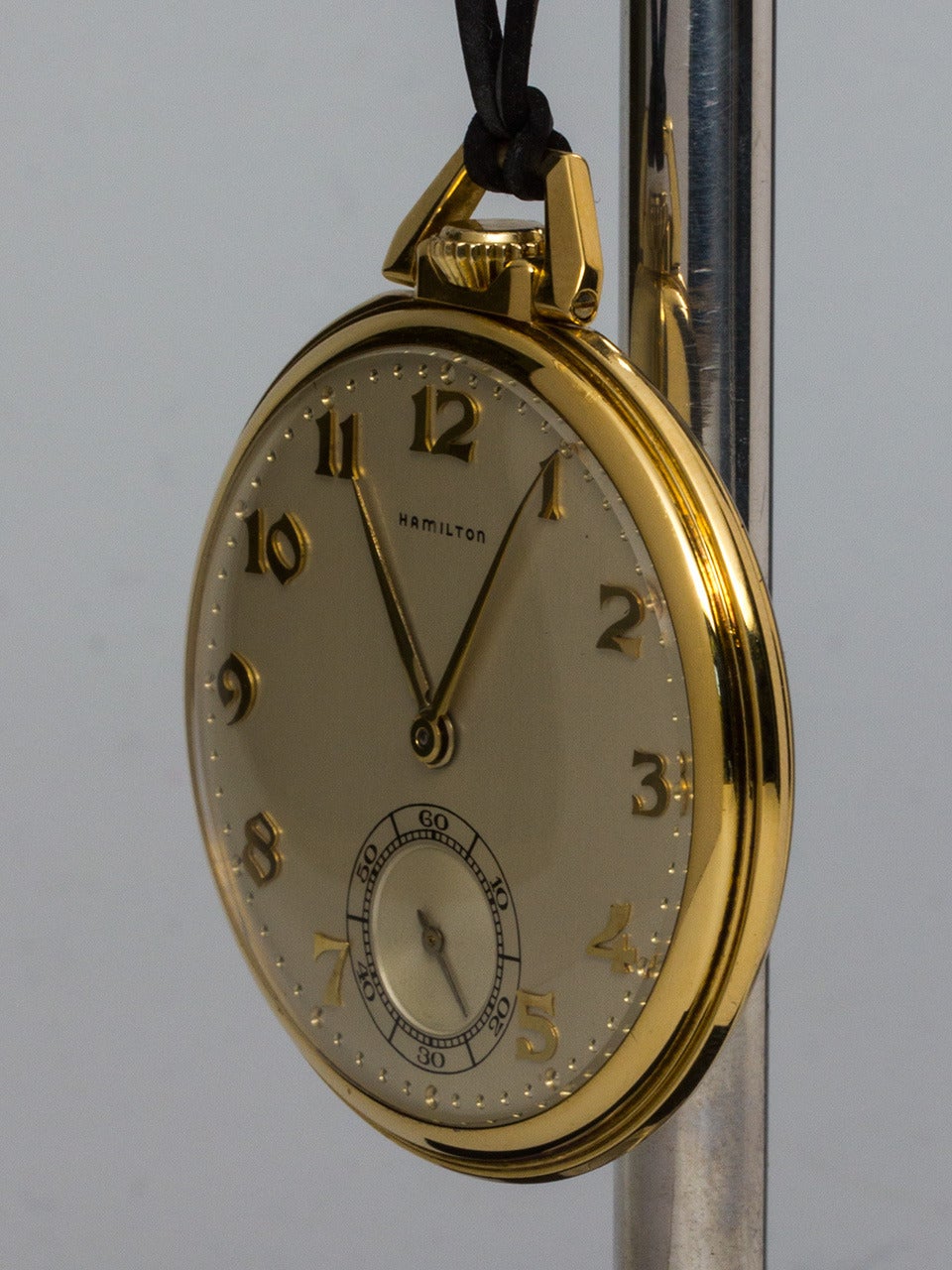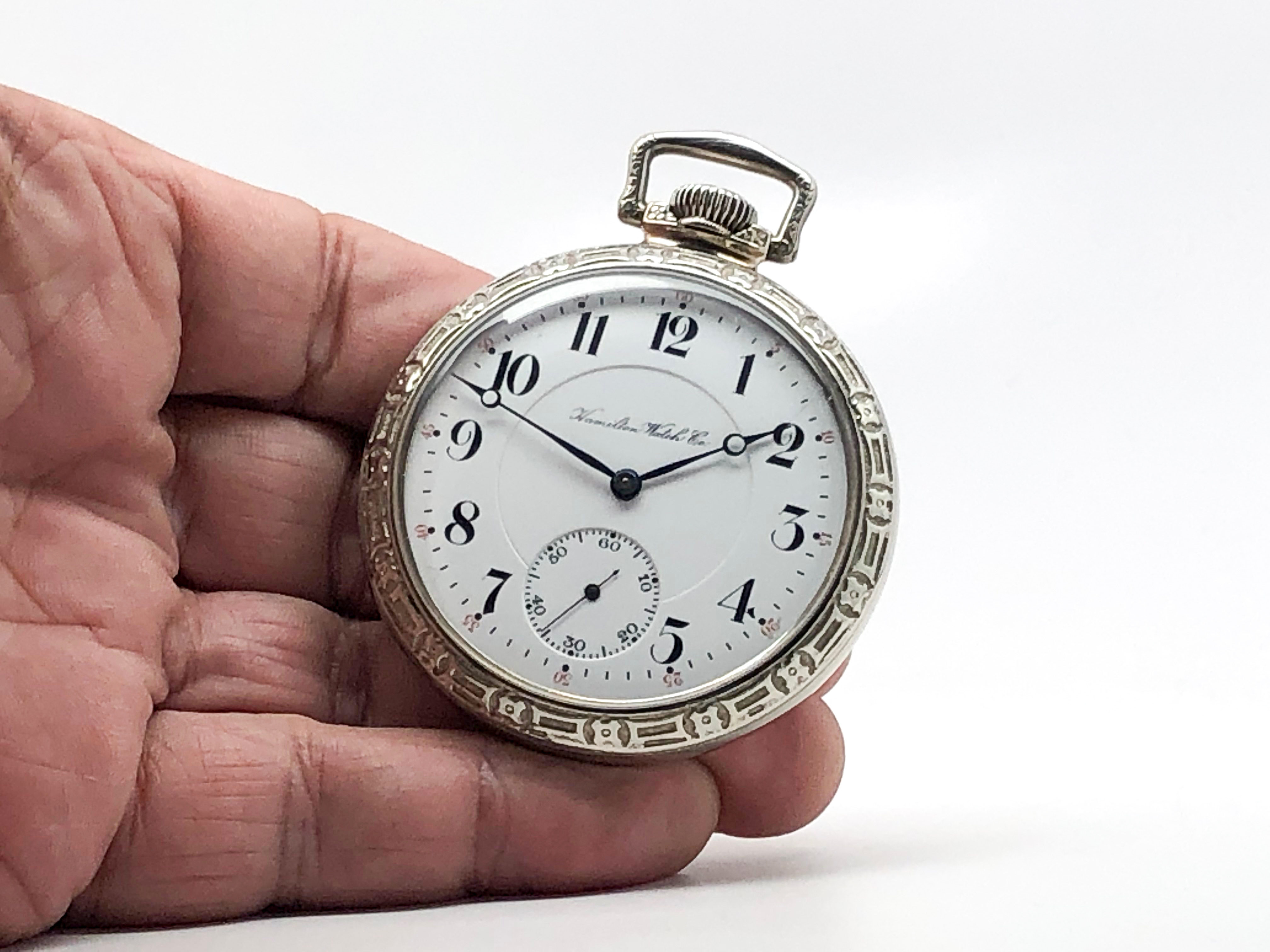
Hamilton’s most popular 18-size movement, however, was the 21-jewel Grade No. 936 from 1893 to 1915, upgrading its escapement around 1906. Lever-set watches became a railroad standard between 19, but Hamilton’s standards were more than a decade ahead of the curve. As opposed to “pendant-set” (push-pull crown) types, lever-set watches were somewhat inconvenient, but they were much more difficult to accidentally un-set.

This required the user to disengage a lever (usually under the crystal) to set the hands via the crown. It was adjusted for accuracy in five positions and featured a lever-set system. Henry Cain had designed the 18-size (44.86mm-diameter) movement, equipped with 17 jewels, a 42-hour power reserve, and a full-plate design. 936 from 1893 - courtesy of Collectors Weekly Hamilton wasted no time in establishing a legacy of tried-and-true timepieces with an American spirit. The group built a new wing onto the Keystone Standard watch factory to accommodate the machinery brought in from Aurora. The group chose the name Hamilton as a tribute to the original owner of the site of Lancaster, as well as its first planner - Andrew Hamilton and his son James. Cain had also been one of the main investors in the project, and he had plans to develop serious railroad-ready timepieces. Along with it came Henry Cain, the superintendent of the Aurora Watch Company, and former head of Keystone Standard just a few years prior. The group decided to merge the two watchmaking companies, transporting Aurora’s machinery all the way to Lancaster.

So in October of 1892, the group purchased the Keystone Standard brand and facilities, as well as the struggling Aurora Watch Company of Aurora, Illinois. A group of Lancaster-based investors, however, would not settle for less than a high-quality watch manufacturer bringing life to their town. But a lack of capital and the effects of mismanagement saw their untimely demise, with Keystone Standard finally going bankrupt in 1891. The Adams & Perry Watch Company, the Lancaster Watch Company, and the Keystone Standard Watch Company had all strived for success, inhabiting the same manufacturing facility built in Lancaster in 1875. The brand rose like a phoenix from the ashes of several prior watch companies that had struggled to gain traction in the prior two decades. The Hamilton Watch Company was founded in 1892 in Lancaster, Pennsylvania, USA. I hope you’ll find it as interesting as my grandfather and I have.Ĭourtesy of Lancaster Online The birth of Hamilton Today, we’ll take our first look at Hamilton’s rich history. The man lived and breathed the American railroad, and for so many years, Hamilton did as well. As I’ve been digging into the history of Hamilton watches, I can clearly see why my grandfather loved them so much.

At 18 years old, I bought my own Hamilton Khaki X-Wind, and it was the crowning piece in my collection for nearly ten years.Ĭurrently, I’m studying more about watch brands than ever. But as silly as I was in not appreciating those treasures, my grandfather’s love of Hamilton watches greatly influenced my watch journey. They still live at my mother’s house half the world away, and, these days, I’m aching to go back and give them the attention they deserve. In my teens, I inherited several of my grandfather’s Hamilton pocket watches, which I foolishly neglected before moving to Japan. Even my grandmother, who knows and cares little about watches, can vouch for my grandfather’s love of the brand. Though he collected many brands of American timepieces, Hamilton watches were his favorites by far. His entire Cleveland basement was filled with locomotive memorabilia, including lanterns, bells, signals, and, yes, watches. He was an honorary member of the Brotherhood of Locomotive Engineers and Trainmen, and he had an unrelenting passion for trains and anything related to them. There’s no doubt in my mind that was thanks to my grandfather, who was a lifelong enthusiast of the American railroad.

When I started my watch journey 16 years ago, Hamilton was a brand to which I instantly felt connected.


 0 kommentar(er)
0 kommentar(er)
